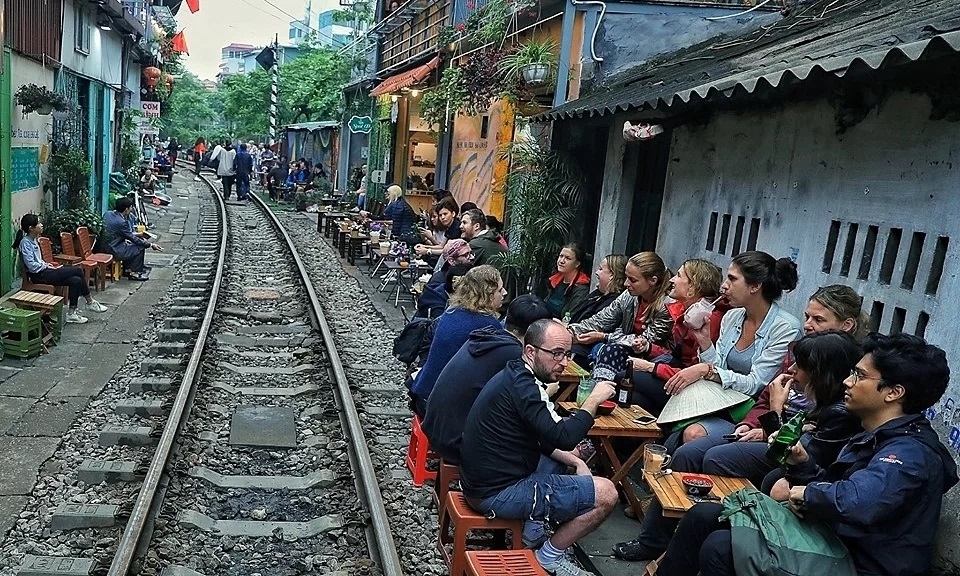
Transport Minister Nguyen Van The reaffirmed Friday that he didn’t support business functioning along railway tracks and urged Hanoi authorities to relocate and resettle residents living along the street.
The Hanoi Train Street, which was closed last month on safety concerns, refers to a section of railway tracks in the capital's Old Quarter that run between Dien Bien Phu and Phung Hung streets just a few feet from houses on either side.
"Most of those living in the Train Street are retired employees and officials of the railway industry allocated land to live more than 50 years ago, before the Railway Law was formulated," The said.
Their residences are a violation of railway corridor traffic safety, he noted, adding the relocation and resettlement of households living along the railway corridor is an "urgent" task.
In recent years, cafés had opened up along the tracks to serve tourists who sat and enjoyed their drinks in close proximity to railway tracks and watched the train passing by.
The selfie craze was taken to extreme lengths by some tourists who stood in the middle of the tracks as a train approached, forcing the driver to bring the train to a complete stop and wait for people to move out of harm’s way.
Such incidents prompted the authorities to order that the street be closed to visitors and the cafés closed. Hurt by the loss of a means of livelihood the café owners petitioned authorities to let their business continue, promising to comply with strict safety measures.
However, authorities in Hoan Kiem District turned down their petition on safety concerns.
Recently, U.S. travel magazine Insider listed the Hanoi Train Street among top 8 destinations that experienced over-tourism in the last decade.
The historic 120-year-old Long Bien Bridge over the Red River, built during the French colonial period, has seen a surge in selfie hunters these days after the Hanoi Train Street was closed last month.

















